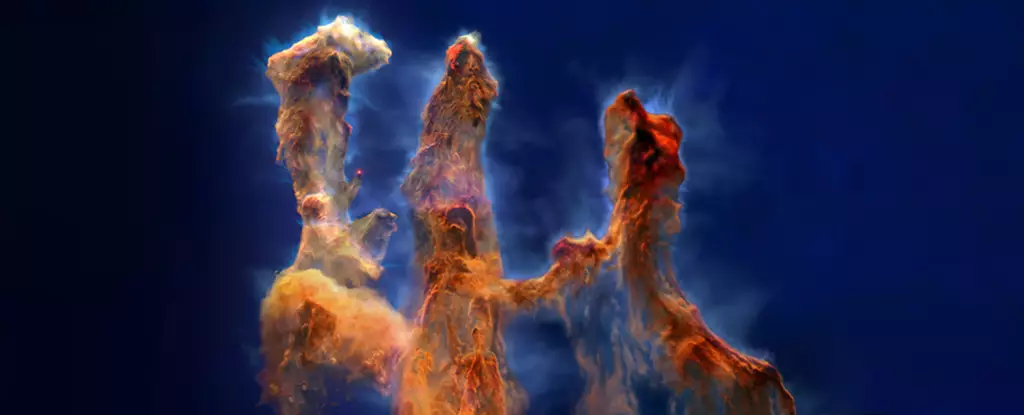In April 1995, the world was captivated by the release of the iconic image known as the ‘Pillars of Creation’, captured by the Hubble Space Telescope. This stunning image showcased the Eagle Nebula, where the pillars are located. These pillars, composed mainly of cool molecular hydrogen and dust, are constantly being eroded by the powerful forces of winds and ultraviolet radiation from nearby young, hot stars. The majestic pillars, resembling cosmic fingers, extend with protrusions larger than our solar system, housing young hot stars within. The tallest of these pillars measures an impressive three light-years from top to bottom.
Recently, the James Webb Telescope has joined in on the exploration of the Eagle Nebula, collaborating with the Hubble Space Telescope to create a groundbreaking 3D animation flight through the nebula. This innovative visualization was made possible by combining data from both telescopes. While Hubble captures objects glowing in visible light at thousands of degrees, Webb’s infrared camera is able to detect cooler objects at just hundreds of degrees and penetrate dust to reveal embedded stars. This collaboration provides a more detailed view of the Pillars of Creation and showcases the power of teamwork in scientific exploration.
The new 3D animation not only offers a breathtaking journey through the towering pillars but also allows viewers to delve into various stages of star formation within the nebula. The central pillar, for example, reveals an infant protostar glowing brightly in the infrared image, embedded at its top. Additionally, a diagonal jet of material ejected from a newborn star can be seen near the top of one of the pillars, hinting at the presence of a hot young star. At the tip of another pillar’s protrusion shines a brand new star, illuminating the cosmic landscape.
One of the remarkable outcomes of this collaboration is the creation of a 3D printable model of the Pillars of Creation. By converting the observational data into an STL file format, individuals can now download and print their own 3D models at home using 3D printers. This not only appeals to enthusiasts and science fiction lovers but also holds significant educational value for schools. The ability to hold a tangible representation of such cosmic wonders provides a unique learning experience that bridges the gap between science and art.
The collaborative efforts of the Hubble Space Telescope and the James Webb Telescope have unveiled a new dimension of exploration into the mesmerizing Pillars of Creation. By combining data from these two powerful space telescopes, astronomers have created a captivating 3D animation that not only showcases the beauty of the nebula but also deepens our understanding of star formation processes. The creation of a 3D printable model further enhances the educational and inspirational impact of this discovery, offering a tangible connection to the wonders of the universe.


Leave a Reply